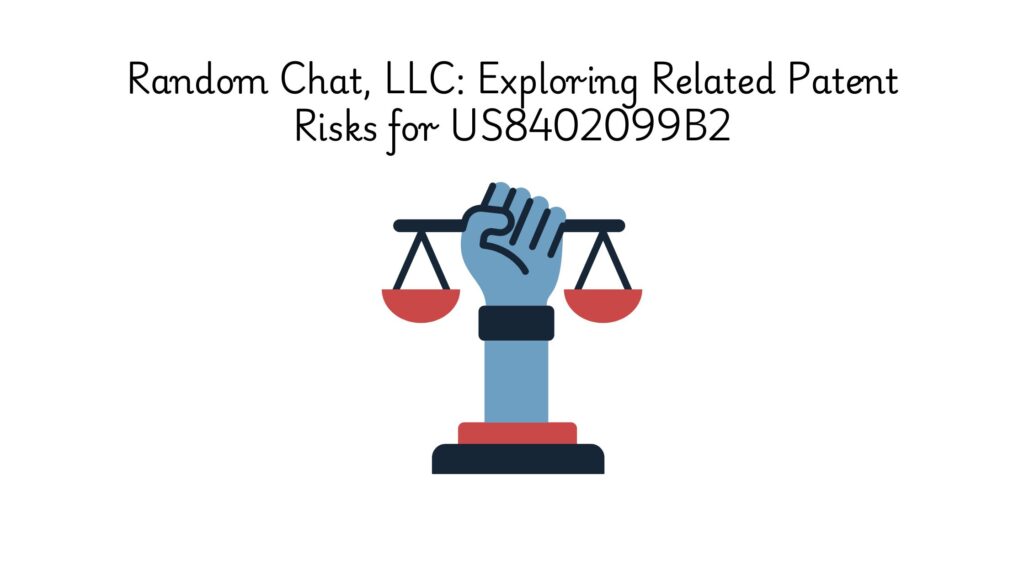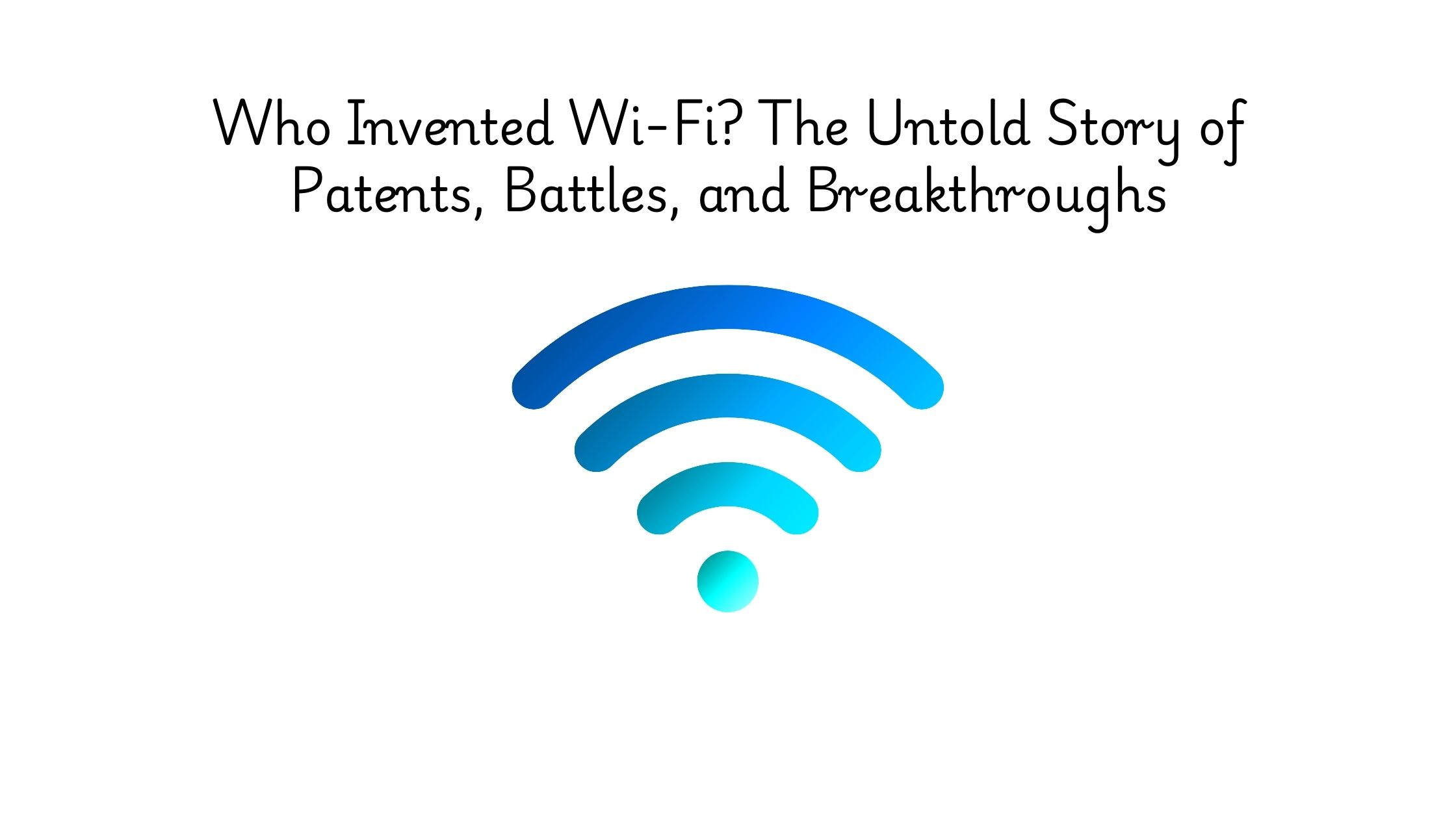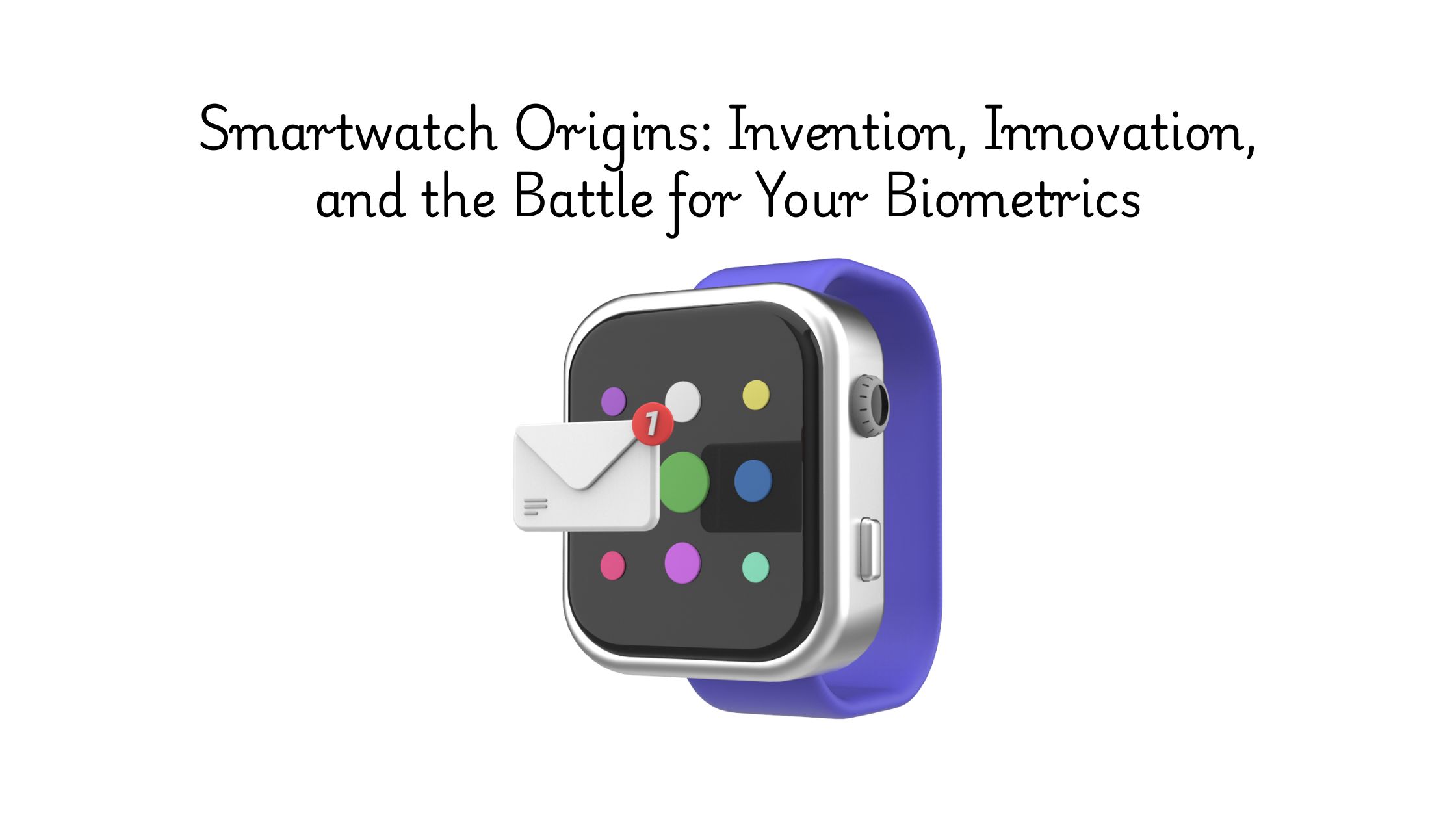US8402099B2 is at the heart of an expansive litigation effort by Random Chat, LLC, a non-practicing entity currently involved in 12 active and 6 inactive cases with 31 related parties. This patent is being strategically asserted across multiple lawsuits, forming the backbone of a broader enforcement campaign focused on modern chat technologies.
At its core, the patent describes a system that enables users to engage in anonymous, real-time chat sessions without needing prior connections or setup, essentially allowing strangers to connect and communicate through a server or peer-to-peer structure. Think of it as the backbone of platforms that support spontaneous online conversations between unknown users.
Why is it being litigated? Because this concept is now widely embedded in digital communication tools, it is a high-value asset for enforcement.
Looking for related patents? The Global Patent Search tool lets you instantly explore technologies connected to US8402099B2 and uncover similar innovations with precision. Let’s take a closer look at what this patent claims.
Understanding Patent US8402099B2
Patent US8402099B2 covers a method for facilitating multimedia communications, such as video, audio, or text chats, between users connected to a network like the internet. The core innovation lies in allowing users to create personalized virtual subscriber profiles that define how and with whom they wish to communicate.
These profiles determine everything from communication type (one-to-one, one-to-many, etc.) to data transfer modes and participant selection, including random or pre-defined contact lists. The technology supports highly customizable and layered communication environments, especially useful for platforms simulating real-time, spontaneous social interactions.
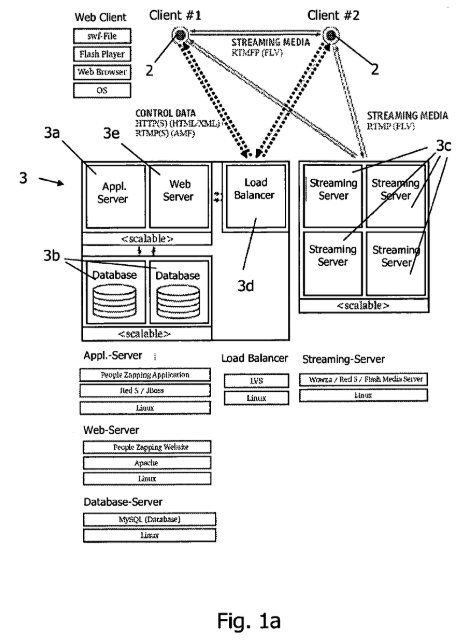
Source: US8402099B2
Its four key features are:
#1. Virtual subscriber profiles: Users create a customizable digital profile that manages login data, preferences, and communication settings.
#2. Dynamic communication modes: Supports various chat structures, private one-on-one, broadcast-style one-to-many, reverse many-to-one, and open many-to-many interactions.
#3. Subscriber pools & selection: Users are grouped into dynamic “pools” based on profile data, enabling random pairing or search-based matching for live chats.
#4. Layered system architecture: A structured system with database, communication, user, and interface layers, allowing smooth management of users and data streams.
Random Chat, LLC is actively litigating this patent because it targets foundational elements of modern chat and video interaction technologies, now commonplace across social platforms, messaging services, and live-stream environments. The broad applicability and functional depth of this system make it a powerful tool in infringement claims, particularly against companies that offer user-to-user chat, video conferencing, or live broadcast features.
Related Patent Reference for US8402099B2
#1. WO2009027323A2
This patent, filed on August 21, 2008, outlines a method for carrying out multimedia communication based on TCP/IP and/or UDP protocols. The invention enables user communication by creating virtual subscriber profiles hosted on a server or peer-to-peer network. These profiles define how connections are made, through random pairing, pre-configured lists, or behavioral tags, and support different types of multimedia interactions (video, audio, or text). The structure of these user interactions is managed through a hierarchical pool system, allowing dynamic classification and filtering of participants.
Key Features of this Related Patent:
- Multimedia communication over TCP/IP or UDP – Clearly discloses the use of network protocols to enable chat functionality.
- Virtual subscriber profiles – Describes user accounts that store communication preferences and behavioral data.
- Subscriber-controlled communication settings – Enables users to define connection modes, data transmission types, and selection logic.
- Random and list-based selection modes – Supports both spontaneous and pre-configured connections between terminals.
Which features of US8402099B2 are disclosed by WO2009027323A2?
| Key Feature of Claim 1 | Disclosure Status |
| A method for executing multimedia communication between terminals in a communication network using TCP/IP or UDP. | Fully Disclosed |
| Subscribers generate personalized virtual profiles on a server or peer-to-peer network. | Fully Disclosed |
| Profiles allow the definition of subscriber selection mode, communication type, number of communication links, and data transmission type. | Fully Disclosed |
| Subscriber selection mode includes a random process for linking a selected terminal to another random subscriber’s terminal. | Fully Disclosed |
| Subscriber selection mode includes random process for linking a selecting terminal to another random subscriber’s terminal. | Fully Disclosed |
| Profile entries and defined contacts classify subscribers. | Fully Disclosed |
| Subscribers form open and closed sub-pools within a total subscriber pool. | Fully Disclosed |
| Subscribers are classified by profile entries and defined contacts. | Fully Disclosed |
| Virtual subscriber profiles enable the establishment of multimedia communication at terminals. | Fully Disclosed |
Key Excerpt from WO2009027323A2:
“It is produced by at least one subscriber a personalized user account in the form of a virtual subscriber profile on at least one server… By means of this setting-up process a mode of a subscriber selection preceding the communication, a communication type and/or a number of communication links… are freely defined… All participants of the process form a total set referred to as a subscriber pool, which may be subdivided into a number of subsets.”
#2. US20050165719A1
This patent, filed on January 27, 2004, describes a method and system for establishing concurrent communications across multiple, independently managed networks. It focuses on enabling users to share multimedia content during simultaneous voice and data sessions. Participants access a data communication service via terminal devices, allowing them to synchronize messaging and file exchange in real time while participating in separate voice conferences.
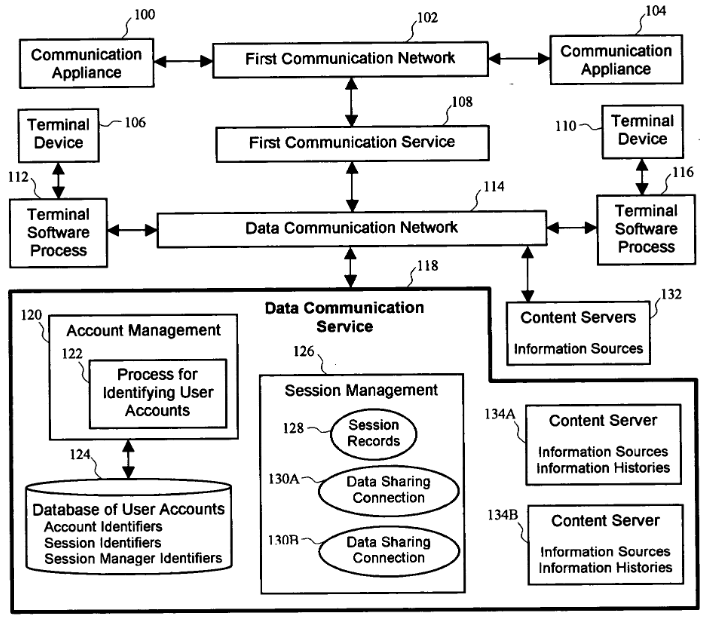
Source: US20050165719A1
Key Features of this Related Patent:
- Concurrent voice and data sessions – Describes the ability to run simultaneous telephone and multimedia sessions.
- Network-based multimedia sharing – Enables multimedia data exchange over managed IP networks.
- Terminal-based login sessions – Participants access services through client devices connected to a central server.
- Session coordination on multiple networks – Establishes coordination logic for managing sessions across distinct platforms.
Which features of US8402099B2 are disclosed by US20050165719A1?
| Key Feature of Claim 1 | Disclosure Status |
| A method for executing multimedia communication between terminals in a communication network using TCP/IP or UDP. | Partially Disclosed |
Key Excerpt from US20050165719A1:
“Concurrent with their telephone conference, the users of communication appliances… log into data communication service… using terminal devices… Each login may occur prior or subsequent to initiating the telephone communication, allowing the users to synchronize multimedia information during the session.”
#3. CN101682622B
This patent, filed on April 29, 2008, presents a multimedia communication method that operates over packet-based networks, specifically using TCP and UDP protocols. It focuses on the trade-offs between transmission speed and data integrity when choosing between these protocols. The invention outlines how real-time audio and other media streams are transmitted over a network, emphasizing efficiency in communication through fast, connectionless protocols like UDP.
Key Features of this Related Patent:
- Uses TCP and UDP for media communication – Highlights protocol choice for speed vs. reliability.
- Packet-based network architecture – Leverages packet switching for data transfer across terminals.
- Real-time audio communication – Focuses on fast media streaming in voice-based systems.
- Protocol flexibility – Discusses switching or selecting protocols based on the communication need.
Which features of US8402099B2 are disclosed by CN101682622B?
| Key Feature of Claim 1 | Disclosure Status |
| A method for executing multimedia communication between terminals in a communication network using TCP/IP or UDP | Fully Disclosed |
Key Excerpt from CN101682622B:
“Using a packet-based network, commonly used protocols include Transmission Control Protocol (TCP) and User Datagram Protocol (UDP)… UDP provides the advantage of sending data quickly, but at the cost of integrity.”
#4. US20070120969A1
This patent, filed on August 29, 2006, introduces an audio-visual communication system that allows users to connect over a computerized network for sharing multimedia data. It includes a configuration where two or more users engage in live visual and audio communication using their respective networked devices. The reference clearly relies on network protocols such as TCP/IP for data exchange, enabling real-time communication across terminals.
Key Features of this Related Patent:
- Multimedia communication between networked terminals – Supports live audio and video sessions over internet-connected devices.
- Computerized device pairing – Describes device-to-device interactions for initiating communication.
- Network protocol use – Utilizes TCP/IP or similar standards to route media streams.
- Visual and audio data handling – Manages the real-time transmission of image and sound signals.
This is how feature mapping from the tool looks like:
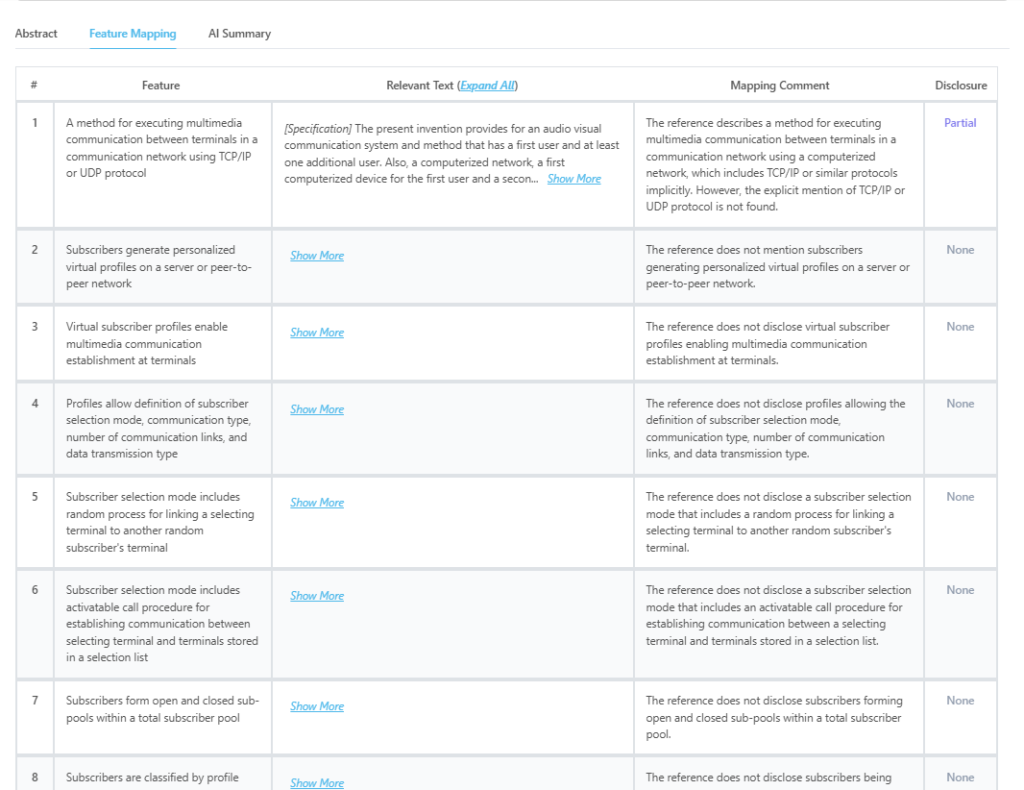
Source: GPS
Which features of US8402099B2 are disclosed by US20070120969A1?
| Key Feature of Claim 1 | Disclosure Status |
| A method for executing multimedia communication between terminals in a communication network using TCP/IP or UDP. | Fully Disclosed |
Key Excerpt from US20070120969A1:
“The present invention provides for an audio visual communication system and method… using a computerized network… wherein a first user and at least one additional user exchange visual and audio data through their respective devices.”
#5. US20060259586A1
This patent, filed on February 1, 2006, outlines a system and method for collaborating and communicating data over a network. It describes how users can access shared data environments through account-based systems. The reference uses internet technologies, including VoIP protocols that operate over TCP/IP or UDP, to enable user interaction and data exchange. However, it lacks direct emphasis on real-time multimedia communication between terminals, focusing more on collaborative data sharing than dynamic chat or streaming functions.
Key Features of this Related Patent:
- Account-based user access – Users log into systems with stored credentials and role-specific permissions.
- VoIP protocol use over TCP/IP or UDP – Utilizes internet-based protocols for communication.
- Server-user device architecture – Establishes a basic system for network-based collaboration.
- Collaborative data exchange system – Focused on enabling group access to shared digital environments.
Which features of US8402099B2 are disclosed by US20060259586A1?
| Key Feature of Claim 1 | Disclosure Status |
| A method for executing multimedia communication between terminals in a communication network using TCP/IP or UDP. | Partially Disclosed |
Key Excerpt from US20060259586A1:
“The account server stores a user’s account information in a user account string. Such account information may include the user’s personal information, company or group information, agent information, and associated access rights.”
Feature Comparison Table
| Key Feature of Claim 1 | WO2009027323A2 | US20050165719A1 | CN101682622B | US20070120969A1 | US20060259586A1 |
| A method for executing multimedia communication between terminals in a communication network using TCP/IP or UDP. | Fully Disclosed | Partially Disclosed | Fully Disclosed | Fully Disclosed | Partially Disclosed |
| Subscribers generate personalized virtual profiles on a server or peer-to-peer network. | Fully Disclosed | Not Disclosed | Not Disclosed | Not Disclosed | Not Disclosed |
| Virtual subscriber profiles enable multimedia communication establishment at terminals. | Fully Disclosed | Not Disclosed | Not Disclosed | Not Disclosed | Not Disclosed |
| Profiles allow definition of subscriber selection mode, communication type, number of communication links, and data transmission type. | Fully Disclosed | Not Disclosed | Not Disclosed | Not Disclosed | Not Disclosed |
| Subscriber selection mode includes random process for linking a selecting terminal to another random subscriber’s terminal. | Fully Disclosed | Not Disclosed | Not Disclosed | Not Disclosed | Not Disclosed |
| Subscriber selection mode includes activatable call procedure for establishing communication between selecting terminal and terminals stored in a selection list. | Fully Disclosed | Not Disclosed | Not Disclosed | Not Disclosed | Not Disclosed |
| Subscribers form open and closed sub-pools within a total subscriber pool. | Fully Disclosed | Not Disclosed | Not Disclosed | Not Disclosed | Not Disclosed |
| Subscribers are classified by profile entries and defined contacts. | Fully Disclosed | Not Disclosed | Not Disclosed | Not Disclosed | Not Disclosed |
| Profile entries and defined contacts classify subscribers. | Fully Disclosed | Not Disclosed | Not Disclosed | Not Disclosed | Not Disclosed |
How to Find Related Patents Using Global Patent Search?
Finding related patents is essential when assessing the strength and originality of any patent under litigation. The Global Patent Search (GPS) tool simplifies this process by offering a structured, data-driven approach that legal teams and analysts can rely on.
Search by patent number or description: Easily input a patent number (like US8402099B2) or keyword to retrieve a list of potentially related patents worldwide.

Source: GPS
Leverage feature mapping: Each result is mapped against the key features or claim elements of the subject patent, highlighting whether each feature is fully disclosed, partially disclosed, or not disclosed.
Review matching results in detail: Click into any related patent to see how closely it aligns with the original, complete with disclosure statuses and direct textual excerpts.
Analyze structured reports: Access side-by-side comparison tables, claim charts, and detailed summaries, ideal for case building and due diligence.
Make strategic decisions confidently: By identifying overlapping technologies early, you can craft stronger defenses or assertive litigation strategies based on real data, not guesswork.
With Global Patent Search, you’re not just searching; you’re uncovering strategic insights that matter. Stay ahead of litigation with clarity, speed, and confidence.
Build a Stronger Case with Smarter Patent Research
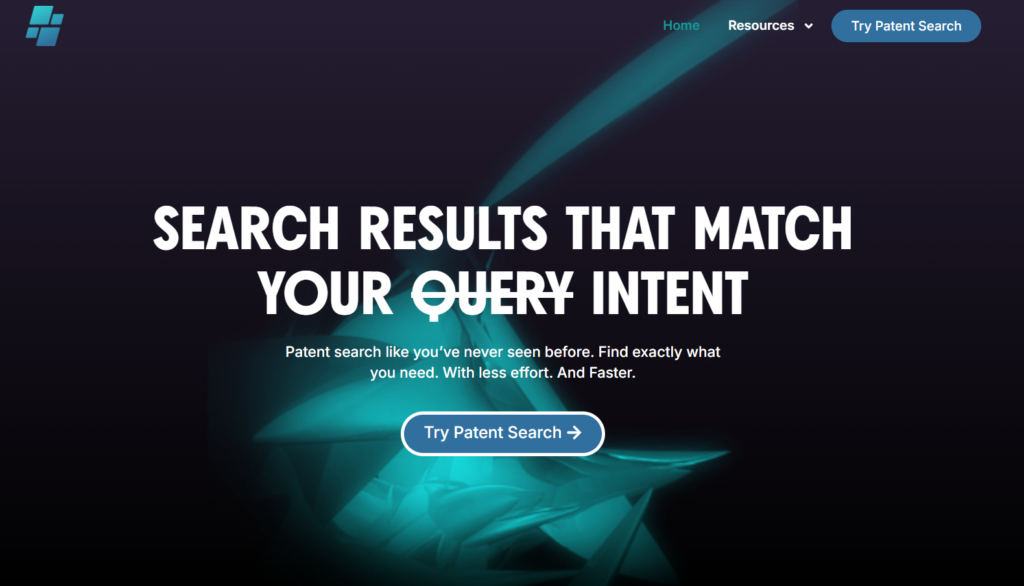
Don’t let uncertainty weaken your litigation strategy. With Global Patent Search, you get the clarity and speed that today’s legal landscape demands.
- Uncover related patents instantly – Just one click reveals overlapping technologies that matter.
- Pinpoint key disclosures – Understand exactly how other patents compare, feature by feature.
- Strengthen your position – Whether enforcing or defending, data-backed insights give you the upper hand.
Make confident, strategic decisions without the guesswork.
Start using Global Patent Search and unlock smarter litigation today.
Disclaimer: The information provided in this article is for informational purposes only and should not be considered legal advice. The related patent references mentioned are preliminary results from the Global Patent Search tool and do not guarantee legal significance. For a comprehensive related patent analysis, we recommend conducting a detailed search using GPS or consulting a patent attorney.

